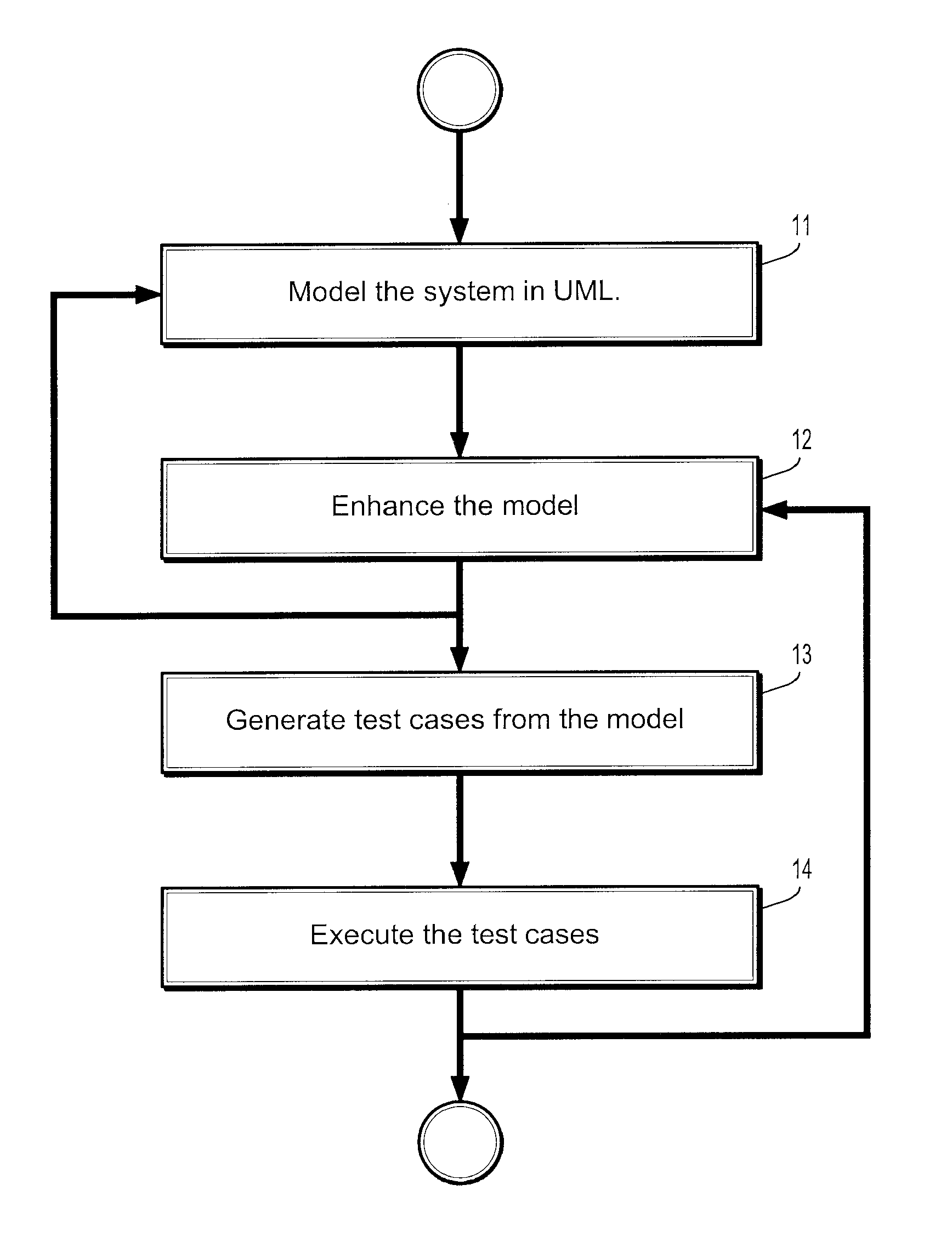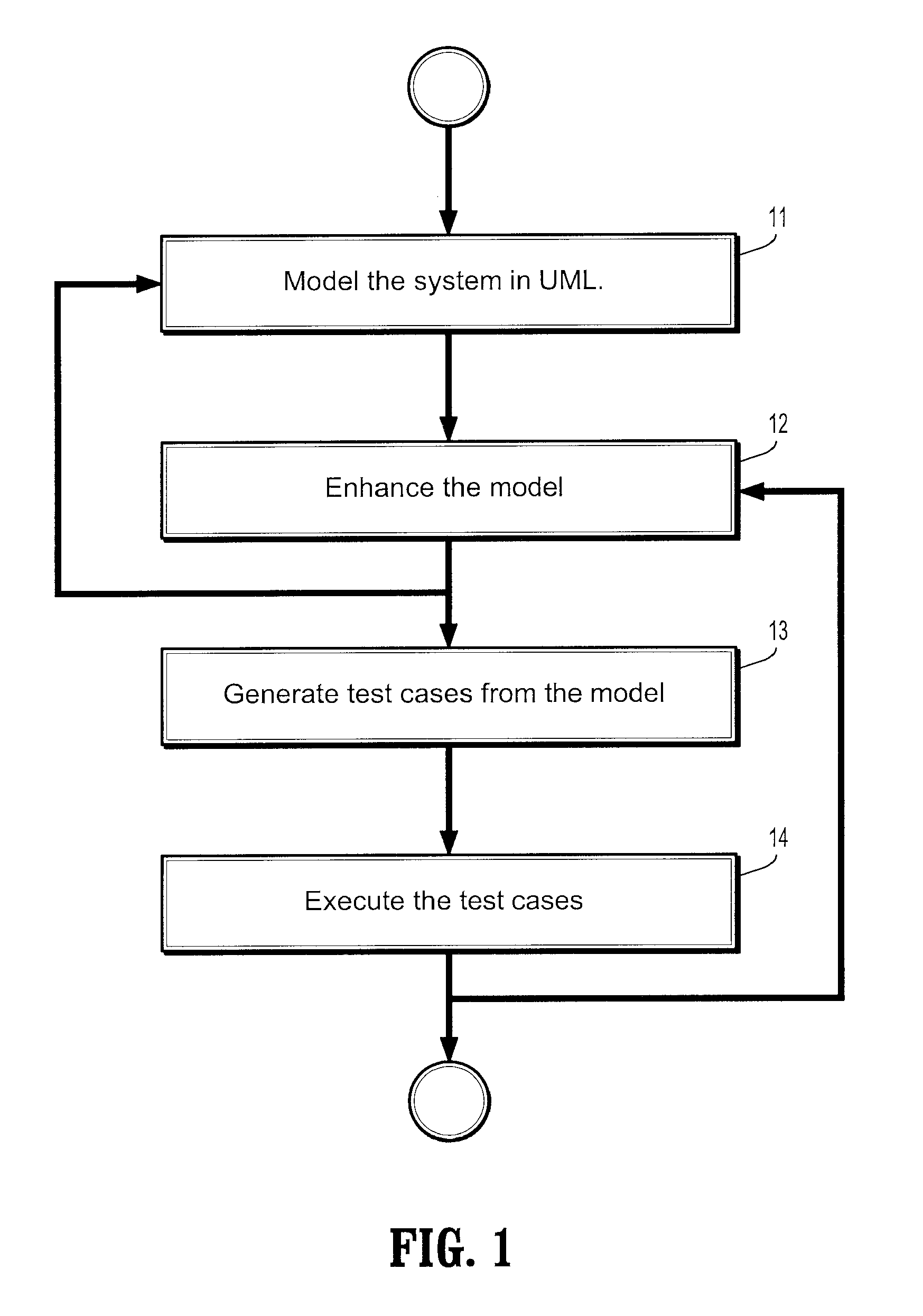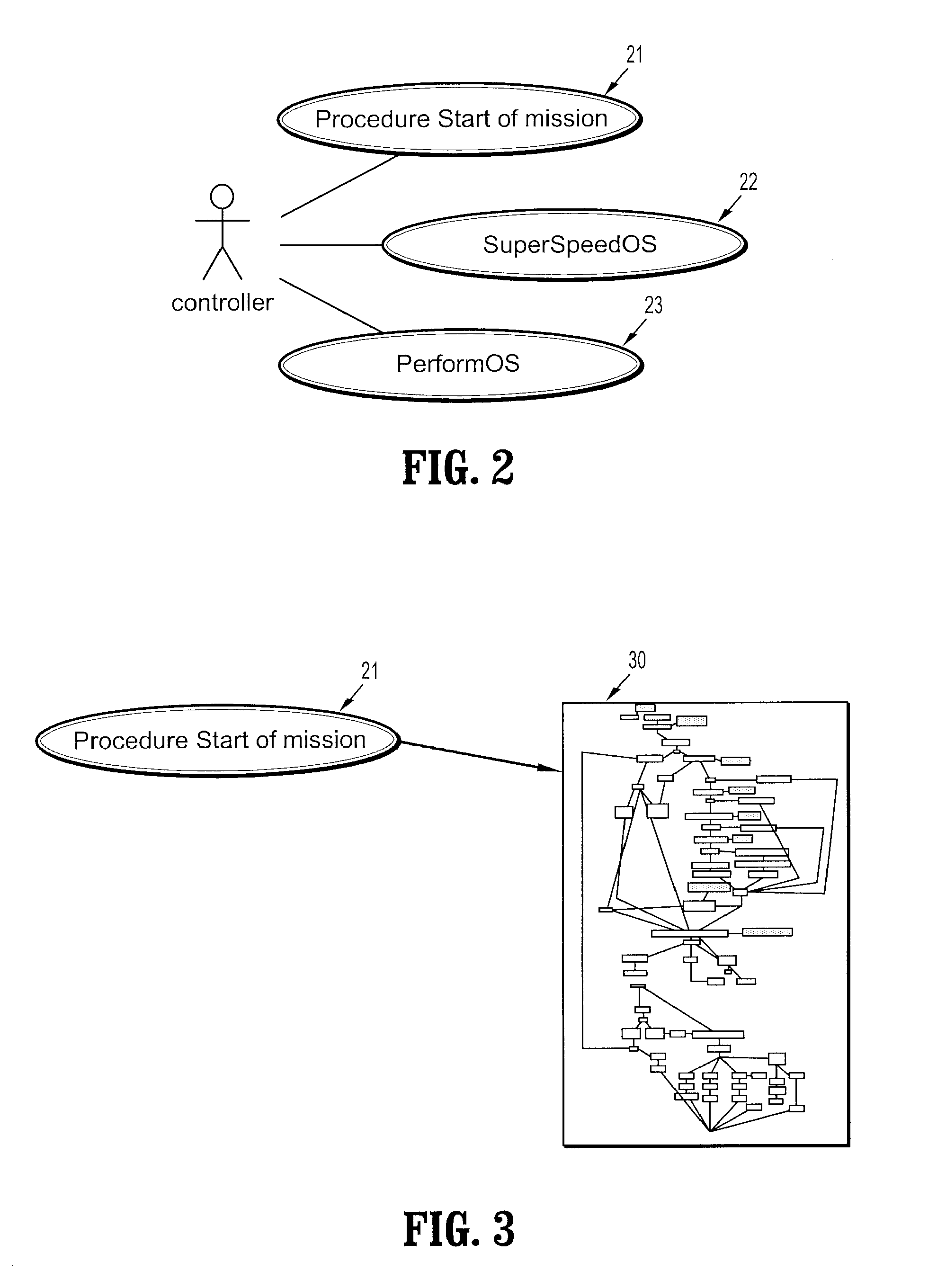System and Method For Applying Model-Based Testing To Train Control Systems
a control system and model-based technology, applied in the field of system and, can solve the problem that the software industry is still far from achieving software defect-fr
Inactive Publication Date: 2009-04-09
SIEMENS AG +1
View PDF11 Cites 46 Cited by
- Summary
- Abstract
- Description
- Claims
- Application Information
AI Technical Summary
Benefits of technology
[0005]Exemplary embodiments of the invention as described herein generally include methods and systems for applying Model-Based Testing for system validation of an embedded industrial control system. A method according to an embodiment of the 5 invention uses UML Use Cases and Activity diagrams to respectively describe which functionalities should be tested and how to test them. The Category-Partition method is then used to introduce data into the UML model. The approach includes modeling, that is, creating UML use cases and activity diagrams from existing documentation, enhancing the models with testing requirements such as test coverage information and data variations, generating test cases in the form o
Problems solved by technology
Despite encouraging results achieved through quality improvement approache
Method used
the structure of the environmentally friendly knitted fabric provided by the present invention; figure 2 Flow chart of the yarn wrapping machine for environmentally friendly knitted fabrics and storage devices; image 3 Is the parameter map of the yarn covering machine
View moreImage
Smart Image Click on the blue labels to locate them in the text.
Smart ImageViewing Examples
Examples
Experimental program
Comparison scheme
Effect test
 Login to View More
Login to View More PUM
 Login to View More
Login to View More Abstract
A method for model-based testing of an industrial system includes modeling functionality of an industrial system using a modeling computer language, enhancing the model by adding functionality or refining existing functionality, generating test suites from the system model, and executing the test suites. The modeling computer language is the Unified Modeling Language (UML), wherein modeling includes defining UML use case diagrams to describe relationships among use cases specified for the system and actors who interact with the system according to the use cases, defining UML activity diagrams to model process logic of each use case, wherein the activity diagrams comprise a sequence of activities and transitions, and defining UML class diagrams to specify data categories and attributes that are inputs to the activities of the activity diagrams, wherein data categories relevant for a use case are modeled as test variables in the activity diagram.
Description
TECHNICAL FIELD[0001]This disclosure is directed to practical approaches of applying Model-Based Testing (MBT) in an industrial context.DISCUSSION OF THE RELATED ART[0002]Despite encouraging results achieved through quality improvement approaches, the software industry is still far from achieving defect-free software. Testing, i.e., defect identification, remains an important activity within software development and maintenance. The use of models for automatically generating test cases is a promising approach to improve the testing process. Automatic test generation has been extensively studied in recent years. Several testing approaches have been proposed based on data and / or control models. Essentially, approaches based on data models use the specification of the set of possible values to verify a parameter under test. Those approaches are very useful when the data model is sufficient to capture a (sub) system's behavior. However, if the behavior of a system depends on the sequenc...
Claims
the structure of the environmentally friendly knitted fabric provided by the present invention; figure 2 Flow chart of the yarn wrapping machine for environmentally friendly knitted fabrics and storage devices; image 3 Is the parameter map of the yarn covering machine
Login to View More Application Information
Patent Timeline
 Login to View More
Login to View More IPC IPC(8): G06F9/44
CPCG06F11/3684G06F8/10
Inventor VIEIRA, MARLON E. R.DIDRICH, KLAUSHERBST, STEFAN
Owner SIEMENS AG
Features
- R&D
- Intellectual Property
- Life Sciences
- Materials
- Tech Scout
Why Patsnap Eureka
- Unparalleled Data Quality
- Higher Quality Content
- 60% Fewer Hallucinations
Social media
Patsnap Eureka Blog
Learn More Browse by: Latest US Patents, China's latest patents, Technical Efficacy Thesaurus, Application Domain, Technology Topic, Popular Technical Reports.
© 2025 PatSnap. All rights reserved.Legal|Privacy policy|Modern Slavery Act Transparency Statement|Sitemap|About US| Contact US: help@patsnap.com



